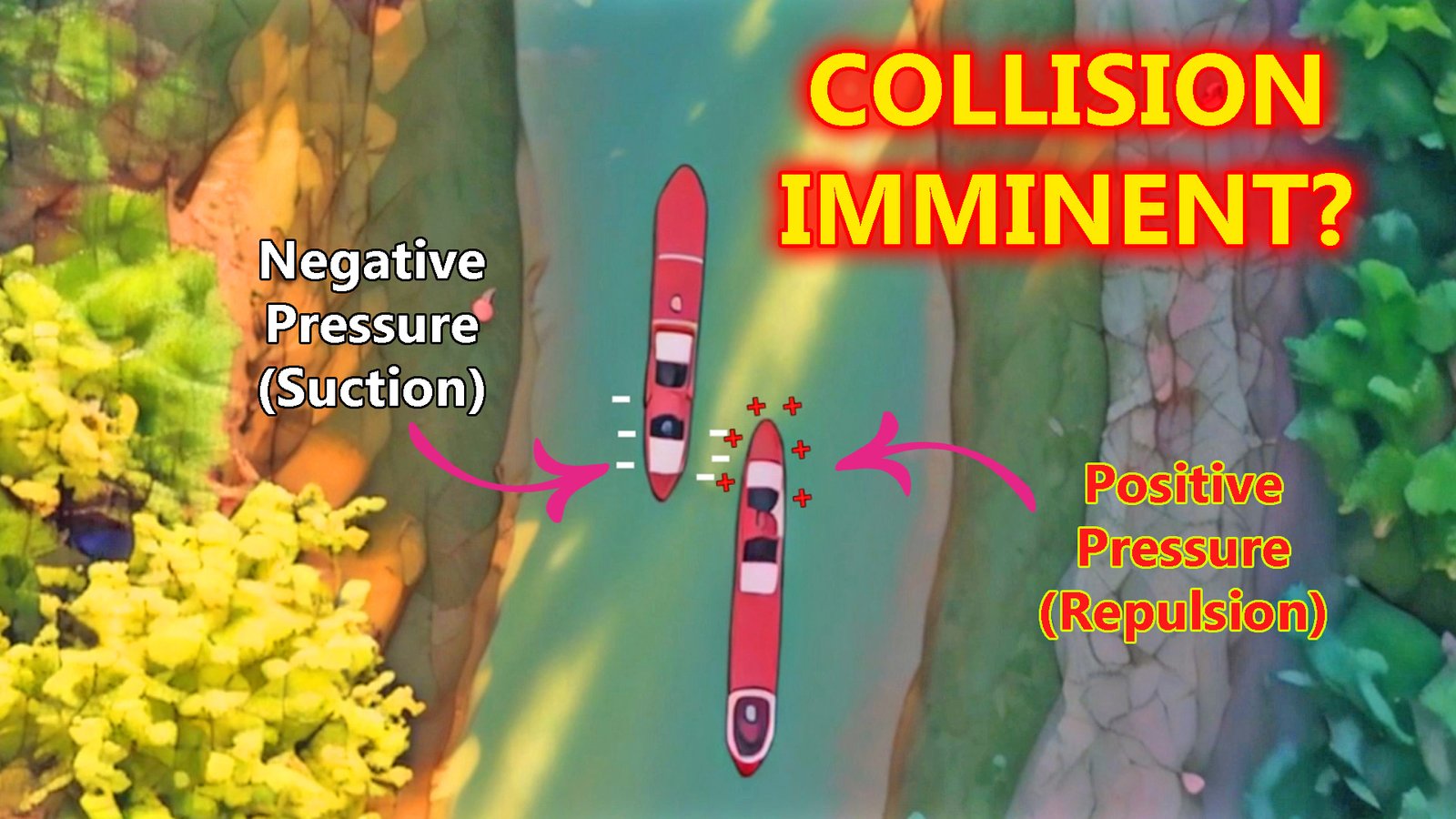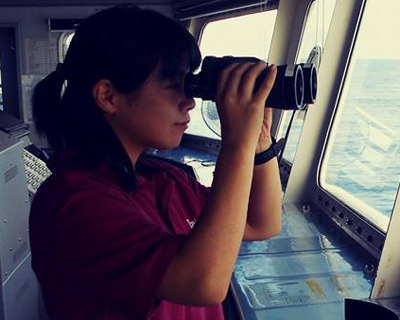Ships overtaking in a narrow channel is one of the most challenging parts of navigating inside waterways.
The confined waterway, hydrodynamic forces, and the vessels’ proximity increase the risk of collision if proper precautions are not taken.
While we have various navigational equipment to monitor the movement of ships in the vicinity, we can’t actually see the forces acting under and around the hull.
However, with proper procedures and caution, safe passage can be achieved and collision prevented.
Here is what you need to know:
Before overtaking the other ship:
Overtaking another vessel can be time-consuming, especially if both vessels travel at nearly identical speeds.
Therefore, it’s crucial to gather information and formulate a plan before initiating the maneuver.
This plan doesn’t need to be written down, but it should be well-considered and adaptable based on how the situation unfolds.
1. Understand the Rules of the Road (RoR Colregs)
Colregs Rule 9 lays out the framework for ships navigating in Narrow Channels.
You should consider your actions based on that rule to avoid confusing other ships who very well understand what that rule is all about.
2. Assess the Situation
Are you in the Region A or B of the IALA Buoyage System? How is the visibility folding out? Is there sufficient width for both vessels to pass safely? What about the traffic?
These questions will lay the framework for how you will overtake the other vessel.
3. Be aware of the hydrodynamic forces
Your ship will interact with the hydrodynamic forces of the vessel being overtaken. This could be dangerous, but if you are well aware of them, you can use them to your own advantage.
3. Communicate your Intentions
You must inform the slower vessel about your intention so they remain vigilant as you pass by.
A VHF call is usually the best method to do that.
During Overtaking – Passing close to the other ship
When overtaking, you must stick to your plan while monitoring the situation.
4. Maintain your speed
Monitor that your speed does not go slower than the vessel you are overtaking with. Avoid increasing speed suddenly, as the turbulence might affect the other vessel.
Increasing speed also magnifies the effect of hydrodynamic forces, including the squat effect.
Observe the ship’s under-keel clearance using the echo sounder to keep track of the depth beneath your vessel.
5. Keep your course
Avoid sudden changes in your course, as this may confuse the other vessel. Sudden course changes will also slow your speed, making the overtaking process much longer.
6. Give enough CPA (Closest Point of Approach)
Avoid steering too close to the ship as they may get sucked in due to the presence of hydrodynamic forces between your ships.
7. Monitor the other ship
A lot could happen When both ships pass close to one another. The other ship might get sucked in, lose steering, or have engine troubles.
Watch the movement of the slower vessel and the ships in the vicinity using visual observation and radar monitoring.
Keeping an eye on your ship and the overtaken vessel helps you react to the slightest signs of trouble.

After Overtaking
Even if you pass clear the other ship, you must exercise caution and monitor the situation.
8. Return to your lane
Once clear with the slower vessel, slowly return to your lane in the general direction of the traffic flow.
Some other ships might overtake you, so keeping clear is better.
9. Continue with your course and speed
Remember that your ship is being watched by other vessels in the area using their ECDIS.
An erratic movement could mean steerage or engine problems that will affect the movement of other ships. Keeping your course and speed will avoid such “misunderstandings.”

Action by the Vessel Being Overtaken
If you are the overtaken vessel, there is only one thing that you should do.
10. Keep your course and speed
According to Rule 13 of ColRegs (Overtaking),
“Any vessel overtaking any other shall keep out of the way of the vessel being overtaken.”
Hence, you must keep your course and speed while monitoring the overtaking vessel.
Collisions in narrow channels can be serious.
By adhering to the COLREGs, assessing the situation thoroughly, and maintaining effective communication, you can safely overtake other vessels and avoid collisions.
Proper planning and a thorough understanding of the hydrodynamic forces at play are essential for safe navigation in confined waters.
May the winds be in your favor.



0 Comments